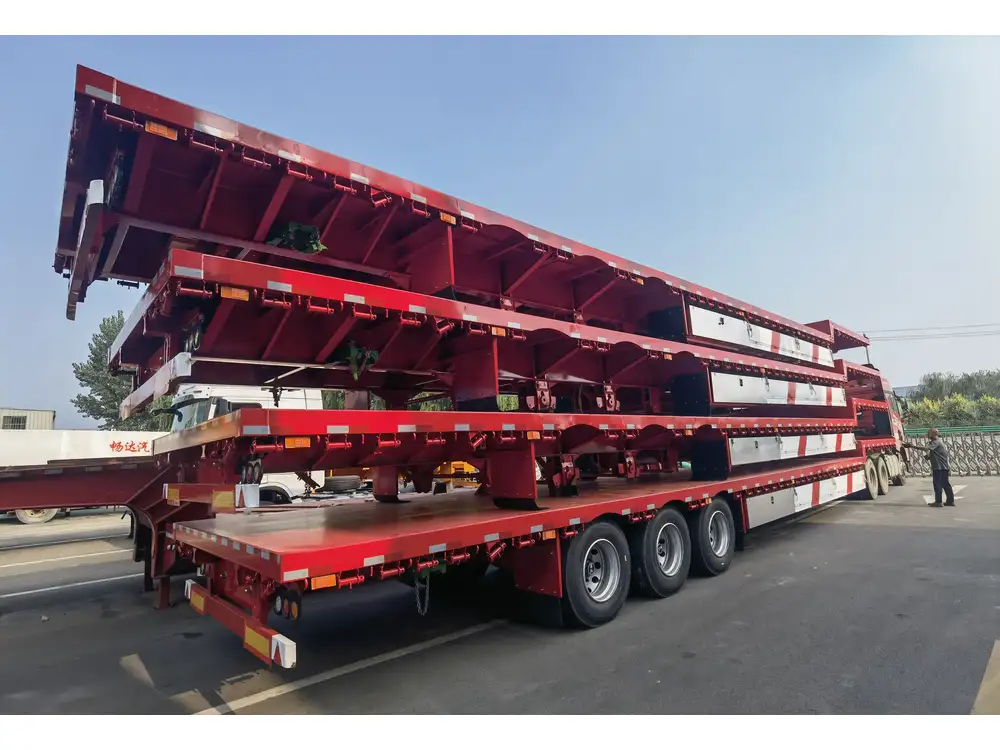When it comes to shipping goods efficiently, understanding the capacity of semi-trailers is essential for manufacturers, suppliers, and logistics firms alike. One of the most common inquiries revolves around the cubic capacity of these essential vehicles, which can significantly influence operational decisions and costs. In this extensive guide, we delve into the question of how many cubic meters are in a semi-trailer, breaking down the nuances that affect capacity and providing insights that aid in logistical planning.
What is a Semi-Trailer?
A semi-trailer is a type of trailer that is attached to a truck and is designed to carry a wide variety of goods ranging from construction materials to perishable foods. Semi-trailers come in several varieties, each tailored to meet specific freight requirements dynamically. The structural design typically includes:
- Chassis: The backbone that supports the trailer.
- Floor: Usually made from high-strength materials to endure heavy loads.
- Walls and Roof: Varies depending on whether the trailer is enclosed, flatbed, or refrigerated.
Standard Dimensions of Semi-Trailers
The capacity of any semi-trailer is intrinsically linked to its dimensions. Most semi-trailers in use today adhere to standard dimensions as governed by national regulations, leading to consistent capacity calculations. Here’s a breakdown of typical dimensions:
| Type of Semi-Trailer | Length (meters) | Width (meters) | Height (meters) | Cubic Capacity (cubic meters) |
|---|---|---|---|---|
| Standard Dry Van | 13.6 | 2.5 | 2.7 | 91.2 |
| Flatbed | 13.6 | 2.5 | 1.1 | 29.8 (varies with cargo height) |
| Reefer | 13.6 | 2.5 | 2.7 | 91.2 |
| Step Deck | 13.6 | 2.5 | 1.5 | 68.4 (varies with cargo height) |

Typical Volume Estimations
Most full-sized semi-trailers fall in a cubic capacity range where precise calculations can be determined by:
Baseline Dimensions
- Standard 13.6-meter dry vans typically have a volume of around 91.2 cubic meters.
- Reefer trailers, which require insulation, maintain similar volumetric output due to layout but with reduced temperature fluctuation capacities.
Internal Usable Volume
- It is vital to consider internal configurations; shelving, refrigeration units, and other structures can impact how much cargo can be fitted. For instance, while the bulk cubic meter might remain unchanged, usable space might only reach 80-85 % of the total volume due to internal fittings.
Factors Affecting Semi-Trailer Capacity
Understanding the cubic meters available in a semi-trailer also mandates looking at factors that can affect the capacity:
1. Load Type
- Weight Distribution: Different load types may necessitate specific weight distribution practices, further influencing how much cargo can realistically be loaded.
- Hazardous Materials: Transporting certain items, like hazardous materials, may reduce payload due to specific regulations and safety protocols.

2. Trailer Design Variations
- Types of Trailers: As detailed, flatbeds, dry vans, and reefers each serve unique logistical purposes, affecting how goods are stored and the overall cubic meter capacity.
3. Regional Regulations
- Weight Limits: Depending on the jurisdiction, legal weight limits may restrict the full exploitation of the semi-trailer’s cubic capacity.
4. Loading Techniques
- The efficiency and methodology used for loading can significantly impact how much product can be carried. High stacking practices can optimize cubic utilization, while bulky goods generally necessitate more space.

Optimal Utilization Tips
To maximize the cubic capacity of a semi-trailer, consider employing the following strategies:
Use of Pallets
Employ standard pallet sizes to enhance stacking efficiency; this can help maintain a consistent loading height while allowing for effective use of space. An additional benefit is the standardization of pallet sizes across many forms of transport, ensuring seamless transitions between ship, rail, and truck.
Load Planning Software
Utilizing software specifically designed for load optimization can yield precise calculations for fitting the maximum amount of goods within the cubic constraints provided by the available semi-trailer.

Consideration of Cargo Shape
Goods that are uniform in shape and size generally allow for better stacking and load stability. Proper planning should entail an analysis of cargo characteristics for enhanced efficiency.
How to Calculate Cubic Meters in a Semi-Trailer
The calculation of cubic meters in a semi-trailer is relatively straight-forward:
Formula:
[ \text{Cubic Meters} = \text{Length (m)} \times \text{Width (m)} \times \text{Height (m)} ]
Example Calculation
For a typical standard dry van:
Given:
- Length = 13.6 m
- Width = 2.5 m
- Height = 2.7 m
Applying the formula:
[ \text{Cubic Meters} = 13.6 \times 2.5 \times 2.7 = 91.2 \text{ cubic meters} ]
This simple calculation can help logistics managers quickly assess how much freight can be accommodated by standard equipment.

Importance of Understanding Cubic Meter Capacity
Understanding the cubic meter capacity of semi-trailers is pivotal for several reasons:
Cost Efficiency
Knowing the optimal cubic space can lead to more cost-effective shipping solutions by ensuring that vehicles are loaded efficiently without exceeding weight limits. This ensures transportation costs per unit decrease, further maximizing profits.
Enhanced Planning
Logistics teams can better plan routes and loads, securing the most effective shipping methods while considering load balancing and cargo integrity.

Competitive Edge
Companies that effectively utilize their trailer capacities stand to gain a competitive advantage in pricing, efficiency, and customer satisfaction. Understanding the nitty-gritty of their shipping processes can lead to improved service delivery and market positioning.
Conclusion
Understanding how many cubic meters are in a semi-trailer is more than just a number; it represents the core of efficient logistics and transportation. By grasping the full potential of our semi-trailer designs—be it a standard dry van, flatbed, or reefer—industry professionals can significantly elevate their shipping strategies, leading to enhanced business performance.
Whether you are in manufacturing, supply chain management, or logistics and transportation, ensuring a clear comprehension of cubic meter measurements fosters better decision-making, optimizes costs, and reinforces overall operational success. As the need for efficient shipping continues to grow, placing a premium on understanding and utilizing the cubic capacity of semi-trailers emerges as an invaluable asset to any logistical enterprise.



